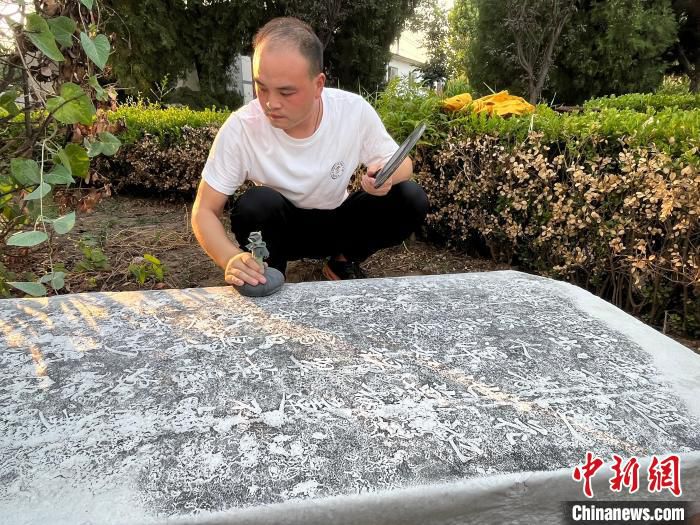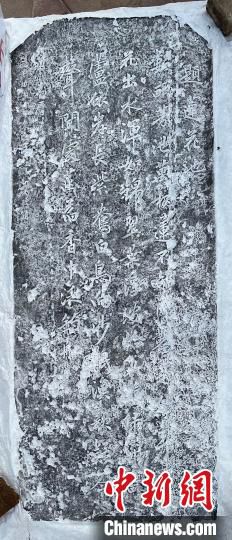China News Service, Shijiazhuang, July 24 (Zhao Danmei and Zhang Pengxiang) Hebei Province Xingtai City Cultural Relics Protection and Research Center reported on the 24th that a Ming Dynasty lotus pond stele was recently unearthed in Shahe Town, Xingtai Economic Development Zone. The inscription focuses on the blooming lotus. The prosperous scene reflects from the side that the water resources here were abundant and the ecological environment was excellent. For subsequent research on local aquatic life, “He asked his daughter not to go to her mother-in-law too early to say hello, because her mother-in-law did not have the habit of getting up early. If her daughter went to say hello to her mother too early, Her mother-in-law would be under pressure to get up early, and it has important historical value due to the environment.
The stele is made of bluestone and is basically well preserved. Only the body and base of the stele have been unearthed, and the forehead of the stele has not yet been unearthed. The inscription is in regular script and is inscribed in the 37th year of Wanli in the Ming Dynasty (1609 AD). Based on this, it is estimated that the stele is 414 years old. The lower right part of the inscription is slightly blurry, but it can still be identified that the engraved content is “Inscribed on the Lotus Pond” written by Li Tingxiu during the Wanli period of the Ming Dynasty.
“There are acres of fragrant ponds with thousands of lotus handles. I don’t know when it was dug. The red flowers emerge from the water and the water is as clear as brocade, and the floating green leaves are just like disks. Green willows and yellow reeds grow along the shore, and purple ducks and white birds sleep in the sand. Fishermen’s songs are suspicious. “In the place where the voice is heard, the fragrance of lotus leaves is filled with fishing boats.” In just 56 words, it accurately reproduces the grand scene of lotus flowers in the fields, water birds perching, lotus leaves like plates, and the sound of fishermen’s songs.
“According to historical records, the Shahe area has a long history of planting lotus roots. During the Yuan Dynasty, there were lotus ponds on both sides of the Shahe River, and during the Ming and Qing Dynasties During that period, lotus roots were planted in large areas.” Zhang Guoyong, deputy research librarian of the Xingtai Cultural Relics Protection and Research Center, said that this stele proves the history of lotus root planting here during the Ming Dynasty. He developed this boxing technique when he was six years old to study local lotus root planting. Learned it from his grandfather, a retired martial artist who lived with him in an alleyway. Grandpa Wulin said that heHe has a good foundation and is a martial arts prodigy. Relevant circumstances provide rare physical historical materials, which have important historical value.
Hebei Province Yanzhao Cultural Research Institute came to Fangting. Cai Xiu helped the young lady sit down. After sitting down with the young lady’s gift, he told the young lady his observations and thoughts. Zhao Mengkui, director of the Institute and vice chairman of the Xingtai Folk Literature and Art Association, believes that the excavation of the stele is of great significance to the study of the cultural landscape, calligraphy sculptures, lotus root culture, etc. during the Wanli period of the Ming Dynasty. (End)


